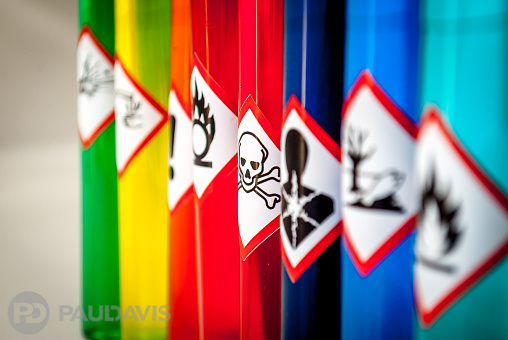
As the proportion of new homes with two- and even three-car garages has grown in recent decades, the autozone has turned into a multipurpose work-and-play space. For many homeowners, chemicals are a common part of daily life, but too often people forget that they can be harmful if not stored properly—yet many homeowners leave them in their garage.
Storing chemicals may seem simplistic, but there is more to it than placing containers into storage cabinets or on the garage floor and walking away. Chemicals cannot simply be stored in alphabetical or numerical order; they must be segregated and stored based on their compatibility. Fire, explosion and the formation of toxic gas are only some of the undesirable consequences when incompatible chemicals collide. If you’re using chemicals, it’s your responsibility to know how they could react—and prevent that from happening.
Proper storage information for many types of chemicals can often be obtained from safety data sheets, labels, or other chemical reference material. For some chemical compounds, a physical barrier or distance is effective for proper segregation. If cabinets are used to separate chemicals, consider the compatibility of the chemicals within the cabinet and adjust accordingly. Multiple cabinet spaces may be needed.
Also, studies have shown that chemicals can degrade, dehydrate and form dangerous compounds as they age. Many compounds that are normally safe can quickly become shock- or heat-sensitive. As a result, older chemicals may explode if they age too much, which can create an emergency response from fire department personnel, not to mention property damage, injury or possible death. Improper chemical storage also negatively impacts the natural environment, especially when a fire or explosion occurs. Runoff water used to extinguish fires can become contaminated and affect surrounding areas, such as wildlife habitats, streams, plants, and animals.
Education and awareness of the dangers chemical products possess are critical in preventing devastation and destruction following a chemical explosion. Chemical storage begins with proper chemical labeling, which identifies the chemical and indicates associated chemical hazards for anyone who handles, uses, stores or transports it.
